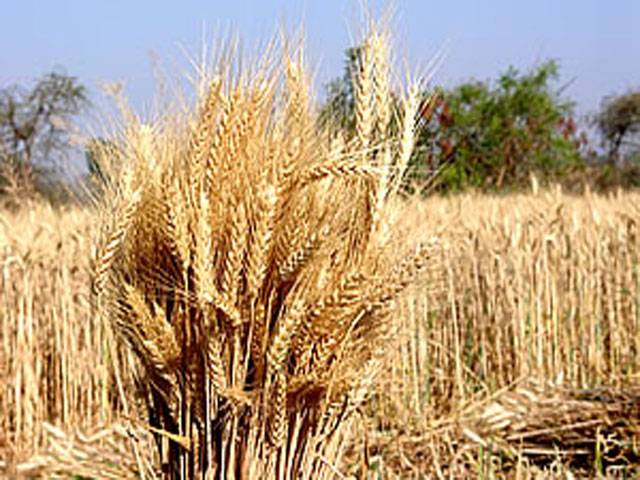ISLAMABAD - Steady growing temperatures pose a serious risk to Pakistan's efforts for achieving sustainable food security and meet food consumption needs of the spiking population, according to studies based on various projections of climate change impacts on the country's agriculture and water resources.
"The global warming induced by rising global temperatures can badly affect the country's food production system in shape of crop yield losses and reduced growing cycles in the various climatic zones of the country," said Mohammad Saleem, the Climate Change Ministry media spokesperson and climate change communication specialist.
In a special talk with a group of media persons, he said that like the most developing countries, Pakistan is starting at the radar of food insecurity, with its food production out of sync with population growth. The food availability scenario is further aggravated by shifting weather patterns with recurring severe droughts and floods that affect the country's overall crop production, the spokesperson added.
He explained that studies carried out by the Global Change Impact Study Centre (GCISC), a Ministry's research wing, pointed out that average temperature over Pakistan would increase in the coming decades at a pace faster than that of the average global temperature increase. "The temperature rise in Pakistan may exceed by about one degree Celsius by the end of this century," Saleem cautioned quoting the GCISC studies.
He said that based on crop simulation models of the GCISC show that wheat crop yield will be reduced by 3.4 to 12.5 percent in semi-arid irrigated areas including Faisalabad, Sheikhupura and 3.8 to 14.5 percent in arid areas including Hyderabad, Badin, Bahawalpur and Multan. Around 16 percent decline in overall wheat productivity in rain-dependent areas has been forecast in various areas of the Potohar region including Chakwal district under different climate change scenarios towards the end of ongoing century.
Graver impacts of the global warming on the country's rice crop have also been predicted. "The rice crop yields are likely to register fall by 12 to 22 percent in almost all rice growing areas of the country by end of this century because of the rising global temperatures," he estimated quoting findings of the GCISC's crop simulation models. The spokesperson said that these simulation models further indicate that length of cultivation periods of these important crops would shorten, which would lead to pronounced plunges in yields of not only rice and wheat but also other crops such as maize and vegetables.
The water requirements of different crops including wheat and rice could register steep rise in coming decades on account of local impacts of global warming induced by untamed rise in the global temperatures. "The climate simulation models have revealed that net crop water requirements would sharply increase because of the global warming impacts on Pakistan's already rapidly shrinking water resources. However, reduced water availability for these food crops in coming decades, which are vital to the country's sustainable food security, may not help meet the rising water requirements of the various crops," Saleem said.
As a result, overall productivity of different food crops would decline as long as water conservation technologies, drought-resilient and high-yield crop varieties, rainwater harvesting programmes and direct seeding technologies were not deployed on war-footing," he cautioned. The country's agriculture sector still remains mainstay of the national economy that accounts for 21 percent share in the gross domestic production, contributes 40 percent share in overall employment and 18 percent in the overall exports.
"However, protecting country's agriculture sector from fallouts of unfolding global warming-induced climate change through an effective policy and science as well as technology-based adaptation and mitigation response is key," the spokesperson stressed. He pointed out that the role of local agriculture, irrigation and extension departments was a key to prepare farmers to deal with these delirious impacts of the climate change on agricultures.






